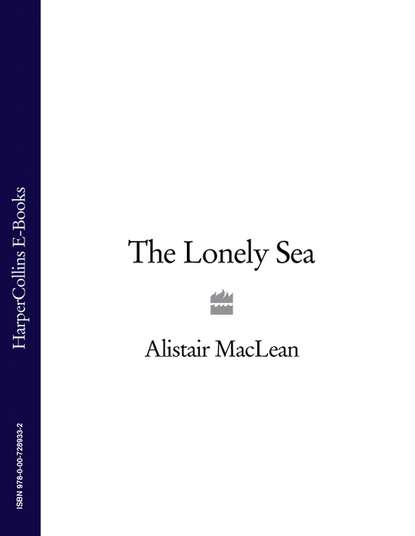По всем вопросам обращайтесь на: info@litportal.ru
(©) 2003-2025.
✖
The Lonely Sea
Автор
Год написания книги
2018
Настройки чтения
Размер шрифта
Высота строк
Поля
The Arandora Star was gone, but almost a thousand of its passengers, guards and crew—mainly Italians and Germans—still lived, scattered in groups or singly over several square miles of the Atlantic. That morning the Atlantic, mercifully, was calm and all but windless—but the sea was bitterly cold. Before long the number of swimmers and those supported only by planks and benches became pitifully fewer and fewer. Mario Zampi lost all but one of the six companions who originally clung to the same bench as he. Their pathetic cries of ‘Mother’, repeated over and over again in three or four languages, grew fainter and fainter and gradually faded away altogether as the numbing cold struck through the scanty clothing and pathetically limited defences of the old, the infirm and the gravely wounded, and stopped the beating of their hearts. And some there were, supported by their life jackets, who, by and by, just lay face down in the water, dead.
About noon, a Sunderland flying boat appeared and circled the area dropping all it had in the way of first-aid kits, emergency rations, chocolate and cigarettes, and then disappeared to guide the Canadian destroyer St Laurent to the scene.
All of the survivors are unanimous in their unstinted praise of the magnificently selfless work performed by the crew of that ship: operating from the St Laurent’s boats while the destroyer itself kept constantly on the move to avoid submarines, they scoured the area for hours until they collapsed unconscious over their oars, having driven themselves far beyond the limits of exhaustion.
In all, the crew of the St Laurent picked up and took to safety over eight hundred survivors, an astonishing feat almost without parallel in the lifesaving annals of the sea, almost enough to make one forget, if even only for a moment, the barbed wire and the thousand men who died.
Almost, but not quite.
Rawalpindi (#ulink_91c1a0bb-6a2e-52a3-8cbc-5e096323b1ad)
Even with the two brand new untried battle cruisers under his command, even although he was leading them on this, their first sortie against the enemy and the cold, dark hostility of the winter north Atlantic, Vice-Admiral Marschall was as unworried as any fleet commander can ever hope to be in wartime. Wilhelmshaven was dropping south behind him into the early gathering dusk of a November afternoon and the low flat shores of Jede Bay were already vanishing into nothingness, but Marschall never spared them a glance. He was busy, far too busy for any of this nonsense of sentimental farewells, and, besides, he knew he didn’t have to bother. Barring accidents, it would only be a matter of brief time before he saw these shores again.
And there would be no accidents. Of that the Squadron Commander, Marschall, was convinced. One of Germany’s best and most experienced naval officers, Vice-Admiral Marschall was fully aware that in wartime the element of risk could never be fully eliminated, that chance must always play its part. But the risk was negligible: not only was he the gambler who had been dealt all the best cards in the pack—he was playing against a blindfolded opponent.
Already, in these first few months of war, the German Naval Intelligence Service, with the intensive preparations of years behind them, was operating at maximum efficiency. Its agents were scattered all over Britain and the neutral countries of Western Europe—and these agents were the best there were. The accuracy and completeness of the information obtained was matched only by the speed with which this information was transmitted to Berlin.
German Naval HQ knew the position, speed, course and destination of almost every convoy leaving or approaching Britain. They knew the position of every British capital ship—and they knew that on that day, 21 November, 1939, every British capital ship was either in harbour or in far distant waters: that the Nelson and the Rodney were in the Clyde, the Hood and the French battlecruiser Dunkerque were in Plymouth, a cruiser squadron was fuelling and victualling in Rosyth, and that the only other ship they might have had to fear, the aircraft carrier Furious was in Nova Scotia with the battleship Repulse. They knew, too, that after the torpedoing of the Royal Oak in Scapa Flow by Leutnant-Kapitän Günther Prien’s U-boat, the British Navy had precipitately abandoned that far northern base, and retreated to the Clyde and Forth, maintaining only a small secret base in Loch Ewe, a northwesterly Scottish fjord. At least it was secret as far as the British public and most of the Royal Navy were concerned: the Germans knew all about it.
There was, of course, no guarantee that these ships would remain where they were. Again, the Germans were unworried. Their experts had completely broken the British naval codes at that time, with the results that British naval redisposition orders were known to the Germans almost as quickly as they were to the captains of the ships concerned.
Not that Marschall had any intention of engaging any large British ships in any case. His superior, Admiral Raeder, had been adamant on this point. This was only a shakedown cruise which might pay the added dividends of dislocating our shipping and drawing off our patrols.
There was the further possibility that news of the departure of the squadron might be transmitted to London by espionage agents, but, in view of past achievements of the British Intelligence Service, that was highly unlikely. At the time, our Intelligence Service was untrained, cumbersome, and almost wholly ineffectual—the Deutschland, for instance, after her first Atlantic foray, had been back in the Baltic for over a month before we knew anything about it. And, it must be confessed, our sketchy air patrols over the North Sea were, at the time, not much better than our Intelligence Service.
Vice-Admiral Marschall, therefore, felt justifiably light of heart as his two battle cruisers, the Scharnhorst and the Gneisenau cleared Jede Bay and sailed out into the cold, wind-swept darkness of the North Sea. A bitter night, a bad night, but Marschall welcomed it, for over and above all the cards he held in his hand, the darkness of the long northern winter nights, the forecasted bad weather and visibility reducing rain-squalls and fog were further powerful allies, that made for safety. Marschall reckoned that it would take him exactly forty-eight hours to reach the Iceland-Orkney line of the British contraband control.
The British Northern Patrols were in position, thinly stretched out over nearly a thousand miles of sea. Cruisers were the backbone of this patrol, but mostly superannuated ships of the old C and D classes. Only four ships could be reckoned as really effective fighting units: the Norfolk and the Suffolk, the same two ships as were to report the historic breakthrough of the Bismarck into the Atlantic in May 1941, were in exactly the same position as they were on that memorable day—the Denmark Strait—the Glasgow was just to the north-east of the Shetlands, with the Newcastle stiffening the line between the Faroes and Iceland. Of these, only the Newcastle was anywhere near the coming scene of action, but even she was too far away.
Holding much of the line in between these cruisers were the armed merchant ships. For contraband control—the stopping and searching of ships carrying proscribed cargoes—these ships were ideal in the high wild latitudes of the Atlantic. Big ex-passenger ships, able to remain at sea for long periods in bad weather, they were stripped of all their luxury fittings, and fitted with guns sufficient to deal with any cargo ship. But only with cargo ships—they were never intended to cope with anything else: it is significant that the very first move of the Admiralty when they finally learnt of the breakthrough of the Scharnhorst and Gneisenau, was to withdraw all the armed merchant ships off the northern patrol. But the order came too late, tragically but inevitably, for one of these ships; for it was not until the Scharnhorst and Gneisenau turned their great guns on the Rawalpindi that the Admiralty knew that these two ships, then the most powerful in the German Navy, were loose in the Atlantic.
The 17,000-ton Rawalpindi, in peacetime a crack P & O liner plying between Britain and the Far East, was one of the first Merchant Navy vessels to be converted to an armed merchant ship. Her gay pre-war colours were gone, lost under a drab coat of battleship grey. The lavishly furnished interior had been gutted, a main control gunnery room constructed and deck fittings removed to make way for ammunition lockers and her hastily installed armament—eight old 6-inch guns, four ranged along either side. But there had been no time, no opportunity to make any alteration to her unarmoured sides and decks, and the strengthening of these was largely impossible anyway: in terms of the penetrating power of modern armour-piercing shells, the hull of the Rawalpindi might as well have been made of paper.
The crew of the Rawalpindi knew this, but just accepted it, with the mental equivalent of a philosophic shrug, as just another of the hazards of the sea. Among the 280 officers and men aboard, there was not one to whom the sea and all its dangers were unknown, for in terms of experience if not in actual age—but more often than not in age as well—it was a crew of old men. Apart from fiftyodd officers and men who had served with the Rawalpindi as a regular passenger liner, the entire crew was composed of RNVR men of the Merchant Navy. RNVR—civilians with the bare essentials of naval training—reservists, and pensioners who had come back to the sea after having already completed twenty-two years in the Navy. There was not one active service officer or rating aboard the Rawalpindi, but there was a tremendous fund of knowledge and experience, more than any regular Naval ship could ever hope to boast. The crew knew the sea and its dangers, and accepted them. They knew too the very sharp limitations of their ship and accepted these also. And when, in latitude 63° 40′ North, 11° 29′ West, at 3 o’clock on the afternoon of Thursday, 23 November, they saw the lean sleek shape of the Scharnhorst looming through the ice-cold rain-squalls of the bleak sub-Arctic waters, they knew that this was indeed the end, but they accepted that also.
On the bridge, Captain Edward Coverley Kennedy, called back to the colours after seventeen long years in the unwanted wilderness of civilian life, had seen the danger and recognized its implications even before any of his men. He wrongly identified the ship as the Deutschland, but the mistake was one of academic importance only: he rightly identified it as a German pocket battleship or battle-cruiser, 26,000-ton leviathans with 13-inch armour-plate and nine 11-inch and twelve 5.9 guns capable of delivering a 8,000-pound broadside in reply to his own puny 400—and his light 100-pound shells could never hope to penetrate that massive armour anyway.
Even as she emerged from the rain-squalls the Scharnhorst’s big signalling lamp was stuttering out the command to ‘Heave-to’. The sensible thing, the wise and politic thing—for which there couldn’t possibly have been any reproach—would have been to do as the Scharnhorst ordered. But with Kennedy, as with most of the great British naval captains down the centuries, prudence in the face of the enemy was a quality that he had never learned, and certainly never inherited. He knew he could neither fight nor outrun the Scharnhorst, but there were sheltering icebergs and fogbanks nearby and, while there remained even one chance in a thousand he was determined to take it. He ordered the wheel to be put hard over and smoke floats to be dropped to cover their withdrawal.
The Rawalpindi was still heeling over on her turn when the Scharnhorst again ordered her to ‘Heave-to’. This time the message was reinforced with an 11-inch shell that crashed into the sea just ahead, sending a tall, slender column of white-streaked water towering far into the rain-filled darkening sky, twice the height of the tip of the Rawalpindi’s main mast. Kennedy acknowledged the weight of the warning by turning even further away from the enemy and dropping more smoke floats.
And then, for a moment, he thought salvation had come. Far off on the starboard bow, a long dark ship, white water piled high at its bow, emerged out of rain-squall, arrowing in towards the scene. One of their own Northern Patrol cruisers, Kennedy thought jubilantly, almost certainly the Newcastle, and he ordered course altered towards this haven. Almost at once the bitter truth struck him, but it was too late now. The new arrival represented not safety but the certain end of everything: it was the Gneisenau, sister ship to the Scharnhorst.
Even the one chance in a thousand had gone. There could be no escape now and the two pocket battleships, Kennedy knew, could pound his fragile vessel to death in a matter of minutes. There wouldn’t even be a semblance of a fight. Captain Edward Kennedy could have placed scuttling charges, surrendered with honour, and, had he succeeded in reaching Britain again, would almost certainly have been given command of another vessel straight away.
But scuttling charges had never played any part in the Kennedy family’s long and honourable two hundred year association with the Royal Navy, and Kennedy was certainly not the man ever to think of such things now even although he, probably above all captains, most certainly owed nothing to a Navy and an Admiralty that had courtmartialled him in 1922 on a grotesquely unfair charge and, brilliant officer though he was, had axed him from the service in the following year, calling him back only in their hour of need in 1939. But whatever he thought at the time we can only guess at: all we know is what he said as he watched the two pocket battleships bear down on him: ‘We’ll just fight them both.’ As a death sentence for a great ship and hundreds of men, this must rank as the most laconic ever.
And fought them both he did. Three times the Scharnhorst ordered him to abandon ship, and on the third time it had its answer—a salvo that fell just short. At the same time, a salvo from the Rawalpindi struck the Gneisenau amidships, and almost together the two German battle cruisers replied with heavy, accurate and devastating close-range fire.
The first salvo from the Scharnhorst crashed into the Rawalpindi’s high superstructure, wrecking the boat-deck and killing almost everyone on the bridge: but Captain Kennedy survived. Almost immediately, another salvo of 11-inch shells, this time from the Gneisenau, crashed into the main control room of the Rawalpindi, and turned it into a lifeless shambles: all semblance of concerted fire now ceased, but the seven guns—one had already been destroyed—fought on independently.
The fires amidships were already beginning to take hold as yet another salvo sliced through the tissue-thin sides of the liner and exploded deep in its heart. One of these blew up in the engine room, completely destroying the dynamos, and this was the blow that effectively carried into execution Kennedy’s sentence of death. With the dynamos gone, the electricity supply was destroyed: and the shell hoists from the magazines were worked by electricity.
Kennedy, still fighting with his wrecked ship, from the twisted wreckage that was all that was left of his bridge, issued instructions that every available member of the crew should assist in manhandling shells up from the magazines and rolling them across the heaving, shell-swept deck towards those guns that still kept firing: there were only five left now.
That exposed deck of the Rawalpindi, raked by screaming shrapnel and jagged twisted steel, became a blood-soaked abattoir for those who fought to reach the empty breeches of the waiting guns. Some carriers were killed outright, and their shells rolled from side to side with the movement of the ship, through the ever-growing flames and over deck-plates beginning to glow dull red from the heat of the internal fires. Other men were wounded, but ignored their agony: one incredibly gallant man, both legs smashed, wounded to death, and with a shell clutched in his one sound arm, dragged his way along the deck, groping blindly for the breech of the gun that he could not see, swearing that he would get them yet.
The battle was grotesquely one-sided. Shells still crashed into the dying Rawalpindi and the end could not be long delayed. Loose ammunition was falling into the fires and exploding far beneath. The entire ship, excepting only the poop and fo’c’sle, was a leaping, twisting map of flame. One by one the guns fell silent, as the enemy destroyed them, as the crews died beside them and the supply of ammunition, cut off by walls of flame, finally stopped altogether.
As a fighting unit the Rawalpindi was finished, beaten into silence and submission, all but dead in the water. But the sixty year-old Captain Kennedy was a man who was literally incapable of conceiving of the idea of defeat. He left his shattered bridge, groped through the blazing ruins of the superstructure and along the deck towards the poop: if he could only drop some smoke floats, he thought, he might still sail the Rawalpindi to safety. His ship was holed and sinking, damaged beyond help or repair and visibly dying: his guns were gone, his crew was decimated, but still he fought for survival. Such indomitable courage, such unyielding tenacity of purpose when all reason for purpose has long since vanished lies barely within the realms of comprehension.
Captain Kennedy vanished into the smoke and the flame, and died.
He was not long survived by his ship or by all except a tragic minority of the crew that had so magnificently served both himself and the Rawalpindi. Another shell from the Scharnhorst brought the coup de grace—a tremendous roar and a column of white flame lancing high into the gathering gloom of the evening as the erupting main magazine blew out through the sides and deck and burning superstructure and almost severed the Rawalpindi in two.
The guns of the Scharnhorst and Gneisenau fell silent: every salvo now could only be so much wasted ammunition. For the handful of men still left alive aboard the Rawalpindi nothing could be achieved by remaining where they were but a death swifter and even more certain than that offered by the ice-cold waters slowly climbing up the rent and gaping sides of the sinking ship.
Miraculously, almost, two of the lifeboats had survived the ferocity of the Germans’ shells, and those few men—twenty-seven in all—who were able, slid down the falls and pulled desperately away from the blazing Rawalpindi: at any moment an explosion might reach out and destroy them, or destroy the ship and pull them after it as it sunk swiftly down to the deep floor of the ocean.
These men, picked up by the German ships, were the only survivors apart from a handful rescued the following morning. Most of the others had been killed by shell-fire, burnt to death or trapped below decks and drowned in the rising waters. Some men who could not reach the lifeboats, jumped into the sea, searching frantically for broken bits of boats, oars, wreckage, anything that would offer even a passing moment’s security before the numbing cold struck deep and their hearts just stopped beating. And many there were, scattered here and there over the decks and in passages and compartments below, too desperately wounded either to move or to call out, who just sat or lay waiting quietly for the end, for the blessing of the freezing waters that would bring swift release from their agonies.
Two hundred and forty men went down with the Rawalpindi, and, in light of the fanatical courage with which they had served both their ship and their commander, it is perhaps not too far-fetched to think that some of those who were still alive when the waters closed over them at 8 o’clock that evening may have derived no little consolation from the thought that if they had to go down with their ship, they could have asked no greater privilege than to do so in the incomparable company of Captain Edward Kennedy.
The Sinking of the Bismarck (#ulink_381d0a38-6d16-56a1-ae31-43e8b354a1c7)
PART ONE
Far south of the Arctic Circle, along the great trade routes of the Atlantic, westerly gales die away to a whisper and then the warm sun shines on the long gentle swells. Far to the north, in the numbing cold of the Barents Sea, stretch away the immense reaches of an almost miraculous calm, the sea milk-white from horizon to unbroken horizon for day after endless day. But between these two vast areas, along the belt of the Arctic Circle itself, lie the most bitter seas in the world: and no part of it more bitter, more hostile to man and the puny ships that carry him across the savagery of its galetorn waters than that narrow stretch of ocean between Iceland and Greenland that men call the Denmark Strait.
From the far-ranging Vikings of a thousand years ago to the time of the modern Icelandic fishermen, ships have sailed through this narrow passage, but they sailed always at their peril, only when necessity dictated, and they never lingered long, never a moment more than they had to. No man, no ship, has ever waited there from choice, but, at rare intervals, some few men and ships have had to do it from necessity; just seventeen years ago this month, two ships, with the hundreds of men aboard them, were just coming to the end of the longest vigil man has ever kept on these dark and dangerous waters.
The ships’ companies of His Majesty’s Cruisers Suffolk and Norfolk were tired, tired to the point of exhaustion. They had kept their vigil far too long. Even one winter’s day in the Denmark Strait, with twenty hours of impenetrable darkness, driving snow, a sub-zero wind knifing off Greenland’s barren ice-cap and the ship rolling and plunging steeply, sickeningly, incessantly, is a lifetime in itself, a nightmare that has no ending. And the Norfolk and the Suffolk had been there for months on end, had been there all through the grim winter of 1940 and the spring of 1941, suffering incredible hardships of cold and discomfort, always watching, always waiting. The strain of watching never ceased, the tension of waiting never ended.
But now summer, or what passes there for summer, had come to the Denmark Strait, and the struggle merely to exist was no longer an all-exclusive preoccupation. True, the cold still struck deep through the layered Arctic clothing, the packice stretching out from the shores of Greenland was only a mile or two away and the rolling fog banks to the east, off the Icelandic coast, no further distant, but at least the sea was calm, the snow held off and the darkness of the long winter night was gone. Halcyon conditions, almost, compared to those they had so recently known: even so, the strain was now infinitely greater than anything that had ever gone before, the tension bow-tautened almost to breaking point.
At that moment, just after 7 o’clock on the evening of 23 May, 1941, the strain, the tension bore most heavily on one man and one man alone—Captain R. M. Ellis, on the bridge of his cruiser Suffolk. He had been there, on his bridge, for two days now without a break, he might be there as long again, even longer, but it was impossible that he relax his unceasing vigilance, even for a moment. Too much depended on him. He was not the senior officer in the area: Rear-Admiral Wake-Walker was in his flagship, the Norfolk, but the Norfolk, though not far away, was safely hidden in the swirling fog. The ultimate responsibility was that of Captain Ellis, and it was a crushing responsibility. He could fail in what he had to do, he could all too easily fail through no fault of his own, but the disastrous consequences of any such failure were not for contemplation. Britain had already suffered and lost too much: one more defeat, one more blunder and the war could well be lost.
The war was in its twentieth month then, and Britain was alone and fighting for its life. Twenty dark, gloomy and tragic months, a gloom only momentarily lifted by the shining courage of the young pilots who had destroyed the Luftwaffe in the Battle of Britain, but now the road ahead was more dark, more hopeless than ever before, and no light at the end of it.
The Wehrmacht’s panzer divisions were waiting, the threat of invasion still a Damoclean sword. We had just been driven ignominiously out of Greece. In that very week, Goering’s Eleventh Air Corps, whom Churchill called the flame of the German Army, had launched a ruthless and overwhelming attack on our forces in Crete, and the end was only a matter of brief time. Six million tons of shipping had been lost at sea, 650,000 tons in that April alone, the blackest month of the war, and May might prove even more terrible still, for at the moment when Captain Ellis was patrolling north-east and south-west through that narrow lane of clear water between the Greenland ice and the Icelandic fogs, there were no fewer than ten major freight convoys and one large and vital troop convoy, far scattered and for the most part only thinly protected, sailing over the face of the broad Atlantic.
And what part, people were asking bitterly, was Britain’s mighty Home Fleet playing in all this. Our first line of defence, our last hope in the darkest hour, why wasn’t it throwing all its great weight into these life and death battles? Why wasn’t it patrolling the North Sea and the English Channel (where the Stukas and the Heinkels could have destroyed it between dawn and sunset on any given day) ready to smash any cross-Channel invasion? Why hadn’t it helped in the evacuation of Greece? Why wasn’t it north of Crete, breaking up the seaborne reinforcements without whom Goering’s paratroopers could not hope to complete their conquests? Why wasn’t it at sea, bringing its great guns to bear for the protection of these threatened convoys in the submarine infested waters to the west? Why was it lying idle, powerless and useless, in its retreat in Scapa Flow? Why, why, why?
Вы ознакомились с фрагментом книги.
Приобретайте полный текст книги у нашего партнера:
Приобретайте полный текст книги у нашего партнера:











